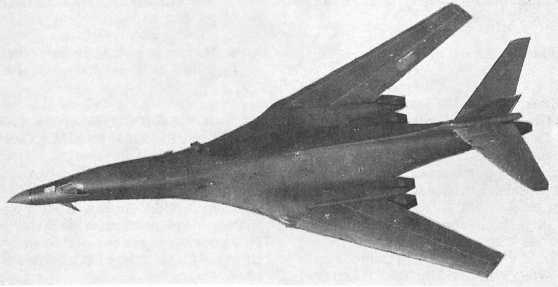| |
seeks to maintain this stability through a
combination of specific, equitable, and verifiable
arms-control agreements.
The focus on relations between the United
States and the Soviet Union is necessary because
both nations are the greatest military powers in
the world today. For the foreseeable future, the
two countries will continue to cooperate and
compete. The precise mixture of cooperation and
competition will depend on the place, the issue,
and how each sees its own national interests in a
particular case.
The Soviets appear willing to strike some
bargains that can reduce the chances of mutual
destruction. At the same time, because their
interests and objectives are different from ours,
tensions have risen in the past and will continue
to do so in the future.
The unique qualities of each leg of the TRIAD
combined provide a level of flexibility that could
not be attained by each one alone. The TRIAD
enhances our employment options, complicates the
Soviet’s hedge against possible Soviet violations of
arms-control limitations, and reduces the impact
of new technological advances.
U.S. NAVY’S ROLE
Deterrence of war has been the sole mission of
and fundamental reason for the existence of the
fleet ballistic missile submarine (SSBN) since its
inception in 1960. The SSBN program is the
Navy’s highest priority. It is an essential corner-
stone of the national security policy, functioning
as a survivable and dependable leg of the strategic
deterrent TRIAD. The submarine leg of the
TRIAD consists of older SSBNs armed with
Poseidon C-3 or Trident C-4 missiles and new
Trident submarines carrying Trident C-4 and D-5
missiles. These submarines spend about 55
percent of their time at sea, with their missiles
targeted at sites in the Soviet Union and Eastern
Europe. Tridents carry 24 submarine-launched
ballistic missiles (SLBMs) compared with 16 in
earlier submarines.
U.S. AIR FORCE’S ROLE
Our
land-based
intercontinental
ballistic
missiles (ICBMs) are unsurpassed in readiness
and immediate reaction capability. They can be
launched quickly, and they have a high capability
of survival. The Strategic Air Command’s (SAC’s)
ICBM force consists of Minuteman missiles and
Titan II missiles, which are being retired. SAC is
modernizing its missile
forces
with
new
Peacekeeper ICBMs, which are being deployed in
Minuteman silos. The Peacekeeper is more
accurate, carries more warheads, and places at
risk the most difficult Soviet targets.
SAC’s manned bombers are the most flexible
element of the TRIAD. They are the only leg of the
TRIAD that can be recalled and reused. Bombers
can be used as a manned penetration or as a
cruise missile launch platform. Bombers can also
be used in support of conventional operations. SAC
can use B-52 and FB-111 bombers to penetrate
Soviet defenses. New B-1B bombers (fig. 11-2) are
being placed into service to modernize SAC’s aging
B-52 forces.
134.131
Figure 11-2.-U.S. Air Force B-1B bomber.
11-5
|

